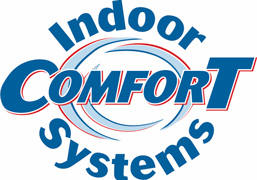
When searching for a heating and cooling system for your residence, it’s essential to choose one that balances efficiency, operation and the impact on your wallet. That’s why many homeowners use mini-splits for comfort in their home.
Mini-splits—often known as ductless mini-splits—provide many advantages that make them a popular choice for both homes and businesses. They're highly energy efficient, decreasing energy consumption and saving on utility bills, because they avoid the energy losses associated with the ductwork found in traditional HVAC systems. They also allow users to customize the temperature in each room, improving overall comfort while saving energy.
If you’re contemplating mini-split installation in Croydon, it’s important to first find out if these devices are the right solution for your living situation. Here, we’ll investigate how mini-splits stack up against other heating and cooling devices and appliances.
What a Mini-Split Is and How It Works
A mini-split, or ductless mini-split, is a heating and cooling mechanism that does not use ductwork. It's a popular choice in homes that don't have existing air ducts and for homes with rooms that aren’t served well by an existing HVAC system.
A mini-split system consists of two major components: an outdoor compressor/condenser and an indoor air-handling device. They are connected by a conduit carrying the power cable, refrigerant tubing, suction tubing and a condensate drain.
Here's how it works: the outdoor compressor moves the refrigerant necessary for heat exchange through the coils and the air handler. The indoor device pulls in air from the room, cools or heats it over the coils and sends the conditioned air back into the room.
Mini-Split vs. Central Air
Mini-splits are good for targeted cooling in particular rooms or zones of your household. They are known for energy efficiency because they only provide hot or cold air for the areas you choose. However, they sometimes don't blend seamlessly into every area because of their wall-mounted indoor units.
Conversely, a central air system uniformly cools your entire home, producing consistent comfort levels throughout. Its ductwork is out of sight, preserving the appearance of your home. But it will likely not be as energy efficient as a mini-split, especially in bigger homes or residences where certain spaces may not need continuous conditioning.
Mini-Split vs. Window AC/Window Unit
Mini-splits are usually more energy efficient and less noisy than a window air conditioning unit and are able to cool multiple rooms. This is why mini-splits are a versatile option for numerous homeowners. They also operate using a type of refrigerant that is more eco-friendly, decreasing their environmental impact. These devices can even add value to your home due to their sturdy nature and remarkable cooling capabilities. However, they come with a greater initial investment.
Having said that, window AC units are less expensive to purchase. They are often a good fit for homes that are not able to accommodate a central Air conditioning system or for people with budget constraints. Despite these advantages, window units can consume up to 40% more energy than ductless mini-split systems and often are louder.
Mini-Split vs. Portable AC
The answer to what is better, a ductless mini-split or a portable air conditioning unit, depends on your goals. If your main considerations are energy efficiency and cooling capability, a mini-split is considered far superior to a portable AC unit. However, if funding is a key concern, a portable AC is less expensive.
Mini-Split vs. Gas Furnace
Deciding between a mini-split system and a gas furnace depends on an assortment of factors such as the climate in your city, home size, energy efficiency desires and how much you plan on spending.
A mini-split system most of the time is more energy efficient than a gas furnace. It can heat and cool targeted areas inside of your home, supplying custom climate control in individual rooms. Mini-splits also are generally quieter and have a higher up-front cost, but their operating costs are usually less due to their superior energy efficiency.
However, a gas furnace can be a highly effective heating source, particularly in colder climates where mini-split heat pumps may not be able to maintain comfort levels in the bitter cold. While they are less energy efficient than mini-splits, gas furnaces likely have lower initial costs. However, their operating costs can be greater, especially if natural gas prices skyrocket.
Mini-Split vs. Heat Pump
Mini-splits and heat pumps operate using the process of heat transfer. They are both energy efficient, but a heat pump's air ducts can be less efficient. That said, the choice between a mini-split and a heat pump often depends on a homeowner's needs and circumstances.
For example, if you are living in a warmer climate and mostly need cooling, a mini-split system might be a more effective choice. However, if you require both heating and cooling and already have ductwork installed in your residence, a heat pump might be a more efficient option.
Mini-Split vs. Space Heater
In regards to heating and cooling a home, mini-splits and space heaters each have strengths and weaknesses. However, for overall efficiency, versatility, comfort and safety, mini-splits come out on top. Mini-splits provide superior energy efficiency due to the fact they deliver conditioned air directly to different zones and can serve multiple rooms at once.
Space heaters are a great deal less expensive to buy but are typically reserved for heating a small area or just one room. They also are often less energy efficient. In contrast to mini-splits, space heaters do not deliver cooling. The greatest drawback for space heaters is the chance of fire. Experts say some 1,700 fires annually involve space heaters.
